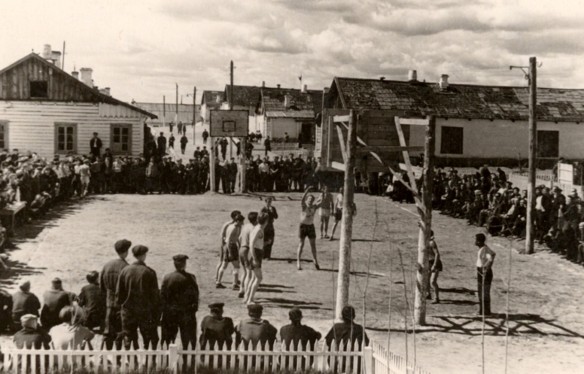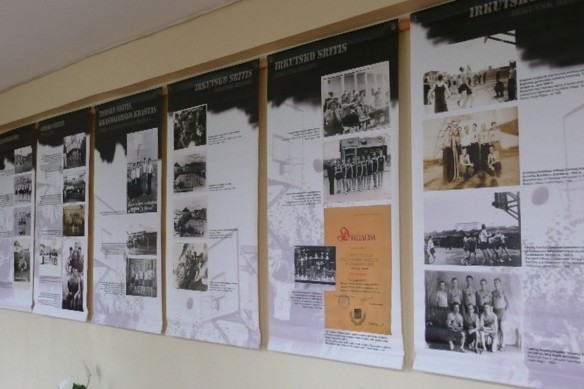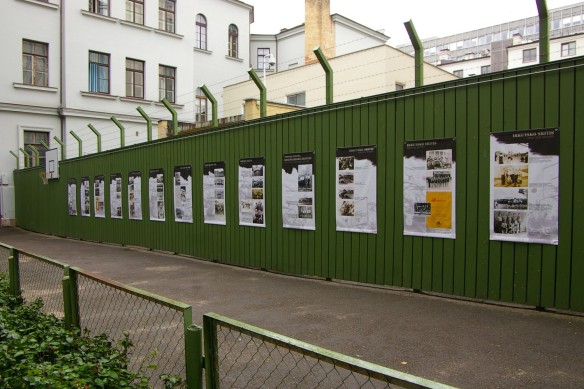The ball shot by a player of the Tauras team flies towards the basket. Mordovian ASSR, 1962
BASKETBALL IN SOVIET LABOUR CAMPS AND EXILE
OWNER OF THE EXHIBITION
The Genocide and Resistance Research Centre of Lithuania. The Museum of Genocide Victims Auku 2a, LT-01113 Vilnius, Lithuania (+370 5) 266 32 82, muziejus@genocid.lt.
CONTACT PERSON
Ms Zydrune Sidagyte, Chief Education Officer of the Museum of Genocide Victims.
LANGUAGE AND TRANSLATION
Texts are in Lithuanian and English.
FINANCIAL CONDITIONS
The borrowers must pay transportation costs and all other expenditures related to translation, erection and dismantling.
TECHNICAL REQUIREMENT
Exhibition consists of 13 stands, each 142 cm high and 82 cm wide.
EXHIBITION VENUES
The exhibition was first opened on 24 August 2011, immediately before the opening of the European basketball championship. It was later exhibited in other cities in Lithuania.


Basketball teams of a labour camp in Omsk. The Lithuanian team Žalgiris (left) and the Ukrainian team Yunak (right) are in the front row; the Latvian team (left) and the Lithuanian team Strėlė (right) are in the second row. 1954

An important foul. Chuna, Irkutsk Region, 1956.

Clapping of hands and cheers of support from ardent fans. Chuna, Irkutsk Region, 1961.

A moment of respite after the match. Antanas Petrikonis and Bronius Kemeklis are resting. Kengyr, Kazakh SSR, 1956.




In 2011, the Museum of Genocide Victims at the Genocide and Resistance Research Centre of Lithuania mounted the exhibition “Basketball in Soviet labour camps and exile”. The exhibition was the result of 2011 being declared the Year of Remembrance of Defence of Freedom and Great Losses, as well as being the year that the European basketball championship was held in Lithuania. The collections of the Genocide and Resistance Research Centre of Lithuania and the Museum of Genocide Victims have many unique photographs showing the basketball teams that were established in soviet labour camps and moments from their competitions. Usually, when exhibitions on the life of political prisoners and deportees are assembled, and when they are referring to their free time, only a small fraction of the pictures available are used. The European Basketball Championship was good timing to remind people of the basketball played in the Soviet labour camps. Under cruel conditions, when every day was a struggle for survival, Lithuanians discovered what united them, what gave them pride and resilience to retain their humanity – and that was basketball.